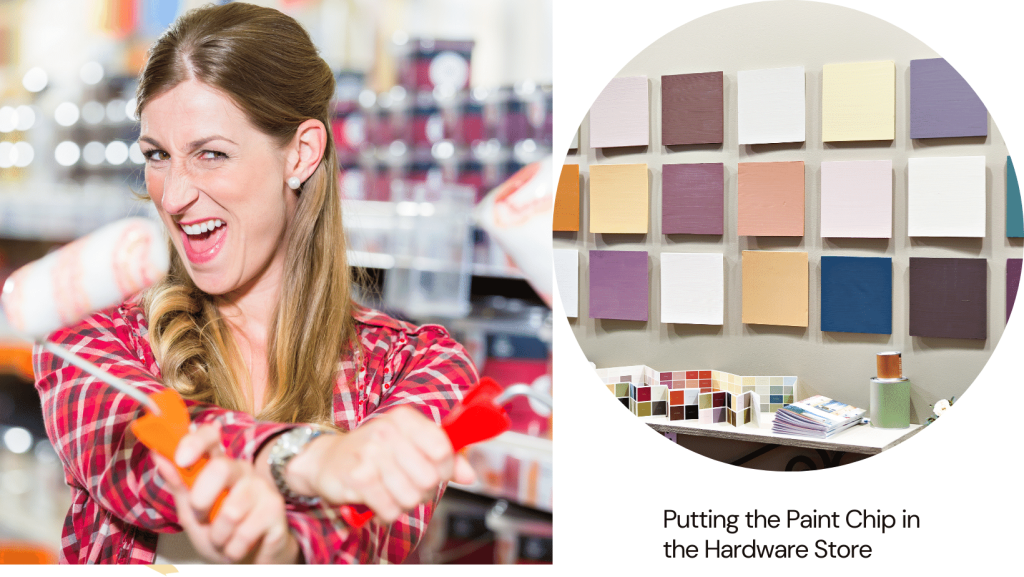Deciding on a perfect paint color that will match the original walls is a difficult task. Still, it is crucial to have a cohesive and uninterrupted interior space. When a new paint color is slightly off from the existing wall color, it can produce an unattractive, half-matching appearance that, in turn, leads to the visual distortion of the entire room. Applying colors that correctly match each other brings room to life and helps balance what we see and experience.
There are multiple perks to having a flawless, smooth paint finish in a living space. Primarily, it gives a feeling that there is continuity and harmony. This can be crucial in areas where a paint color change is more gradual, especially in an open-concept layout. Moreover, the mood created by a quality color match will make the architectural features in the room, such as the moldings or the built-ins, look inviting because they will match the color of the walls. Lastly, a harmonious paint application that joins fluctuated colors or tones can elicit the sensation of quiet and tranquility.
Technique 1: Visual Contrast Matching
Visual color matching is one of the most prevalent and accessible methods of matching paint colors. This approach implies reviewing a few angles of the present wall paint under different lighting conditions and comparing them with paint samples or swatches. Through thoughtful inspection of the color beneath and the undertone of the existing paint, you can then make well-informed judgments regarding which new paint color will give the best results.

When looking at color mixing, consider that lighting can affect the proper hue. This is because the same paint color can be seen in different ways, depending on the type and power of light bulbs in the room. For instance, if a color appears warm and welcoming in natural daylight, it could become more relaxed and less distinct under artificial lighting. Through the observation of the existing color under various lighting conditions, you can discern the finer points of color and make more precise color selections.
Technique 2: Color matching software can be used to match the existing colors and create accurate color designs
Like a color demonstration app where individuals match the palette colors to the smart phone screen and get the color name, there are also technology remedies that enable homeowners and do-it-yourselfers to discover the ideal paint color. Matching tools with color lights– be they handheld devices or apps on mobile phones–allow for the analysis of the existing colors on the walls due to their advanced color measurement and reading technology.
These tools are able to carefully capture color data or colored information of the existing paint with their specialized sensors and cameras. Then, they look into the vast curation libraries. Specific screens allow customers to custom-mix a color that is just right and utilize advanced technology.
The critical element to remember when using a color-matching tool is understanding how the technical mechanism works. Although the reliability of these devices could be affected by factors including device quality, the situation considered by the color capture, and the level of environmental complexity, these tools are typically helpful to our process during the selection of the new color. Knowing about the tool’s features and hindrances is one means of making more informed decisions regarding the color recommendations it provides.
Technique 3: Putting the Paint Chip in the Hardware Store
Another good way to match an existing paint color of a wall with a new color is by bringing a small chip of paint from the wall to the paint store. This allows you to work with a store clerk, taking advantage of their experience in color-matching to find as close a color match as possible.

Before you try the color-matching technique, use a sharp edge to carefully take a small patch of a paint sample from the wall where the selected color will be applied. You can do this by gently scraping off a small area of the paint. Ensure you are careful with the paint chip so it does not get dirty or damaged; this will help achieve paint color consistency.
Achieving a Seamless Paint Finish
Overall, making the appropriate color selections is an important part of enhancing a paint job to attain the desired outcome. Depending on whether you’re transforming just a single wall or remodeling an entire room, your workspace can be affected emotionally by selecting the same shade as the very color that already exists.
The three main ways in which paint colors are matched include the view of what you can see, a device that helps you name the color, or carrying a small chip of paint to the hardware store. These all have varying advantages and can either be used singularly or together to find the perfect match. Comprehending the characteristic features of each painting technique and elements that can affect color perception can either lead to success or failure. Homeowners and DIYers can be an asset in creating a visually pleasing and harmonious painting finish they can be proud of.

